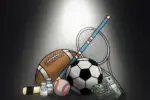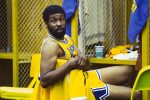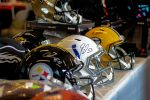As Major League Baseball and its players’ union finally shook hands and signed its new collective bargaining agreement, the game of baseball took an enormous leap forward by implementing a universal designated hitter for the 2022 season.
If you’re not familiar, the designated hitter rule allows teams to use another player to bat in place of the pitcher and has been used by the American League since 1973. Additionally, the use of a designated hitter has been a highly contentious topic among baseball fans and owners for well over a century. Many purists claim that designated hitters cheapen the sport and even go as far as to label the rule a gimmick.
Those self-proclaimed purists are wrong; the universal designated hitter is an absolute godsend for the game of baseball. One look at how pitchers fared at the plate last year confirms the notion: Pitchers aren’t good at hitting. In 2021, pitchers struck out in 44% of their at-bats and hit a measly .110 AVG/.150 OBP/.142 SLG across 4,830 plate appearances. Woof. Nothing pure about those numbers.
These numbers are especially troubling when considering the near-crisis-point MLB is at with its strikeout rate: League-wide strikeout rates increased each season from 2005 to 2020, with each season breaking a new record. These numbers alone show that the MLB desperately needs to change its rules to spark more offense, and purists can’t deny that the steady increase in strikeouts has made baseball collectively less enjoyable for viewers. The push to cut down on strikeouts is long overdue, and throwing pitchers out of the equation means fans get to watch 2,125 fewer strikeouts than last season if we go by the previous season’s numbers. Baseball needs fewer strikeouts, and implementing a universal designated hitter is the appropriate solution. Huge win.
The universal designated hitter is a substantial move in the right direction for improving the enjoyment of baseball and will also benefit the players further. Over the years, the American League has been home to several aging power hitters who have made millions of dollars while almost exclusively playing the designated hitter: Frank Thomas, Jim Thome and Edgar Martinez, to name a few. The aforementioned players were able to find success as designated hitters after injuries significantly strained their bodies’ ability to weather 162 games as two-way players. With the designated hitter now deployed across both leagues, players have 15 more opportunities to extend their careers in the form of National League clubs. It’s hard to imagine that players, agents or purists could be upset about that.
The San Diego Padres first baseman, Luke Voit, was asked about the universal designated hitter rule by Mark Feinsand and said, “It helped my career out a lot. That was big.” Agent Scott Boras went as far as to call the designated hitter debate a “health and safety issue.”
With more teams now in the fold for designated hitters, the game of baseball will additionally benefit from an overdue injection of excitement. As many baseball fans know, designated hitters are notorious for being power hitters capable of hitting baseballs farther than the most impressive of pitchers. For example, some of today’s most exciting power hitters are exclusively designated hitters, like Nelson Cruz, Yordan Álvarez and Giancarlo Stanton.
While I don’t believe that baseball is dying to the same extent as many others say, a home run represents one of the most exciting plays in sports and having more of them certainly seems like a good idea if you’re truly worried about the sport’s success. And designated hitters indeed hit far more home runs than pitchers. According to Fangraphs, designated hitters hit 528 home runs in 2019 and scored 1,406 runs, far more than the 24 home runs and 248 runs pitchers could muster.
The wacky fight between purists and progressives over the designated hitter rule dates back to the late 19th century, despite the notable history being largely unknown to baseball fans. After watching his pitchers flail helplessly at the plate, William Chase Temple — the owner of the Pittsburgh Pirates and statistics enthusiast — was the first to brainstorm the idea of a designated hitter back in 1891 when the league was experiencing a sharp decline in offense.
“Every patron of the game is conversant with the utter worthlessness of the average pitcher when he goes up to try and hit the ball,” Sporting Life wrote in its magazine after speaking with Temple, “It is most invariably a trial, and an unsuccessful one at that.”
Temple eventually lost when he brought the matter to a league vote. Still, the idea of a designated hitter continued to be discussed throughout the 20th century. The American League ultimately adopted it after a surge of pitching dominance in the late 1960s.
In 1968, the league ERA (earned run average) was a staggeringly low 2.98, and Denny McLain won 31 games. MLB wrestled with the idea of a designated hitter as a result, and five years later, the American League adopted the position by an 8-4 vote for a three-year trial run that hasn’t ended.
The National League came close to adopting the designated hitter rule in the 1980s but interestingly failed because of a poorly-timed fishing trip. On Aug. 13, 1980, the National League held a simple yes/no vote regarding the designated hitter position, and the Pirates decided they would vote how the Phillies voted. Phillies owner Rudy Carpenter instructed his vice-president Bill Giles to vote in favor of the designated hitter. Giles later learned the designated hitter wouldn’t be implemented until 1982 and couldn’t reach his boss to discuss the matter because Carpenter was on a fishing trip. As a result, the Phillies and Pirates abstained from the vote, and the National League narrowly voted against the designated hitter by a margin of five to four. Few fans are aware that a fishing trip drastically altered how baseball was played for 40 years.
This brings us to the present day, where MLB has made its game infinitely better by mandating the designated hitter across both leagues. The game will undoubtedly miss the hilarity of the Bartolo Colón like moments that arose from the pitchers being asked to hit, but that is the only actual loss the universal designated hitter presents. The change was long overdue, and I’m glad that MLB has finally come to its senses.
















